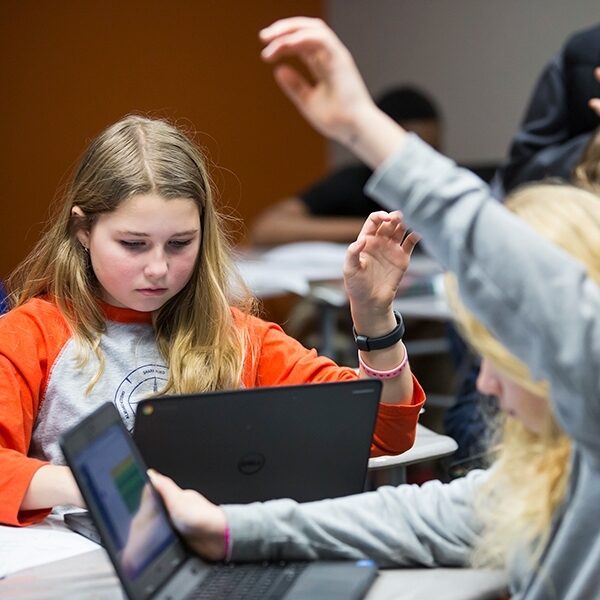
I’ve been fortunate to live most of my web-browsing life as an able-bodied person. I’ve never encountered any difficulties being able to find, see, and otherwise experience online content, which is crucial in an age where people are so likely to consult Google for answers to their questions and dilemmas. The convenience is undeniable – especially for able-bodied “citizens” of the web.
The internet is an exciting, informative, and highly accessible place for people who do not have disabilities. But for those among us who may have sight or hearing limitations, or may be living with other physical and cognitive differences, the internet isn’t always such an inviting space.
My first foray into the world of accessibility came not out of necessity, but rather as an investigative pursuit to right the “wrongs” of websites deemed inaccessible. The driving force was a no-brainer for me (as I’m sure it is for so many): people should be able to access any digital content, regardless of disabilities or impairments.
Quickly, I found that making a website truly accessible is not always the easiest task. There are a number of modifications that go into improving a website’s accessibility, ranging from detailed image descriptions to complex back-end code changes. I worked with school districts dealing with limited financial and staffing resources that lamented their predicament; they wanted to make sure their websites were accessible to students and parents, but they often lacked the means and knowledge required to make it happen. My accessibility work continued to be an ongoing process. Admittedly, it wasn’t always at the top of my mind, but it was a consistent consideration of mine.
It wasn’t until earlier this year that I experienced web accessibility in an entirely new way – after waking up one morning to a wrist that had gone numb. After some diagnostic work, my doctor instructed me on how to best care for my wrist as it healed. The most difficult part was going to be wearing an inflexible splint on my dominant hand for a few months. I knew the task would be a little cumbersome, but what I wasn’t prepared for was the close peek into what it may be like, day in and day out, for individuals with disabilities to go about their lives.
In my position, I work remotely, and I’m lucky enough to have the support of an understanding team of colleagues who offered to help me make any accommodations I needed to get my work done – particularly as I realized that much of my work became more exhausting because it involved wrestling with a standard laptop and keyboard. Typing became a literal pain. Graphics work? That took me twice as long as it normally would. Even scrolling and using a mouse became trickier, and I found myself more frustrated than usual with finicky scroll-sensitive drop-down menus.
I started looking into accessibility software and add-ons that might make these issues a little easier to deal with (and let me get my work done at the pace I was used to), and I decided that I wanted to do it in the most straightforward way possible. Not all folks who could benefit from accessibility add-ons have the ability to pay for them or search tirelessly for the perfect fit, so I wanted what I used to be free, easy to find, and easy to use.
With some research, I was excited to find that Apple (my current laptop manufacturer) provided some native accessibility tools on its machines, so I knew I wouldn’t have to pay extra for them. After reading a few tutorials, I set out onto the web with Mac’s built-in screen reader, VoiceOver, activated, and even now – months later – I’m not entirely sure if I’ve gotten the hang of it. I experimented with getting the screen reader to read websites and PDFs alike, and I found interacting with digital content that wasn’t properly configured for navigation to be painful. I’d end up on different areas of a page where I didn’t want to be and hastily mashed buttons to try to navigate to where I needed to go. I had to adjust and customize the pacing and pitch of my reader, then had to listen to the words it read with careful scrutiny. “Lead,” the verb, became “lead,” the metal; “content,” the subject matter, became “content,” the state of being. Context clues make these narration mistakes discernible, of course, but it did require more time and brain power to process.
A VoiceOver veteran would probably chuckle at my attempts at mastering the tool immediately, and I’m certain that if I had more time with the program, I’d be using it more fluently, but it took some effort for my hands and mind to adapt. Screen readers weren’t intuitive for me. Becoming familiar with them presented another barrier to accessing digital content – even if the tool itself ultimately helps people overcome some of the most pressing barriers.
Another issue I hadn’t anticipated was how accessibility would intersect with my working and processing styles. Even though I struggled with getting a screen reader to work, I was better at giving my laptop vocal, hands-free commands (likely a result from the “training” I inadvertently received from using Siri on my cell phone). Surely, I thought, writing something on my screen would be much easier. Writing is normally a beloved pastime of mine, but I quickly discovered that I was very much an “internal processor,” and I struggled to verbalize my thoughts. I was so used to writing being a positive, flowing experience, but my attempt at writing through VoiceOver felt shoddy, challenging, and, quite frankly, discouraging.
It was at this point that I found myself connecting my experiences to the idea that students across the world may be feeling the very same frustrations. A physical or cognitive difference can make a student feel like their options – and possibly their own potential – are limited, and this difficulty can be further complicated by the fact that present-day accessibility technology, as helpful and well-intended as it is, isn’t always up-to-date, intuitive, or readily available.
While educators, educational content providers, and ed leaders don’t always have the ability to change the technical limitations of accessibility tools, we need to keep in mind the fact that we are responsible for providing the best learning experiences possible for all students.
Leaders need to make an active commitment to learning about accessibility and making appropriate considerations for students to make sure they’re given the tools and options they need to succeed. Technology and digital content providers need to design with accessibility in mind from the beginning – not just as an afterthought. Students should be able to access the tools and the content they need, and families should be able to access the information they need to support their students, regardless of physical or cognitive differences.
The road to accessibility is a long one, but it’s one that we all should travel down.

